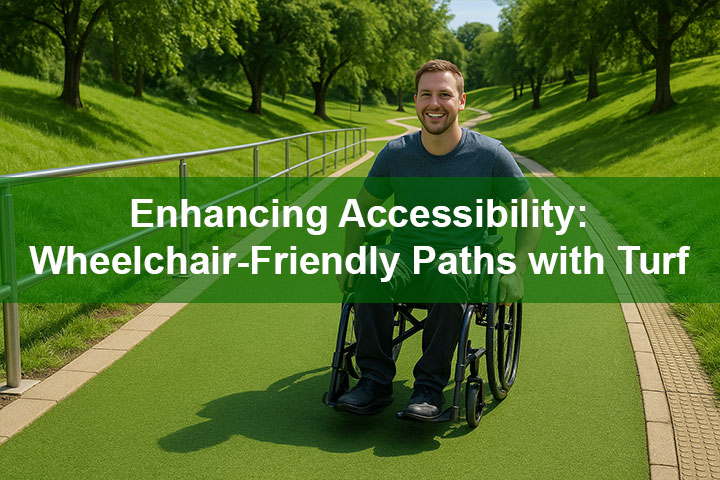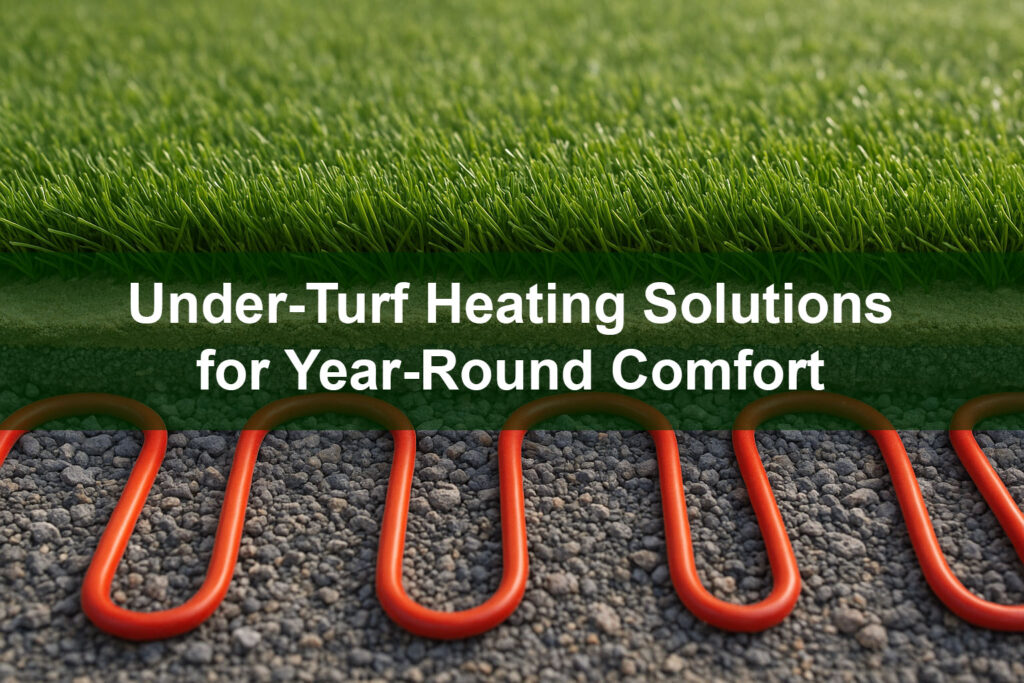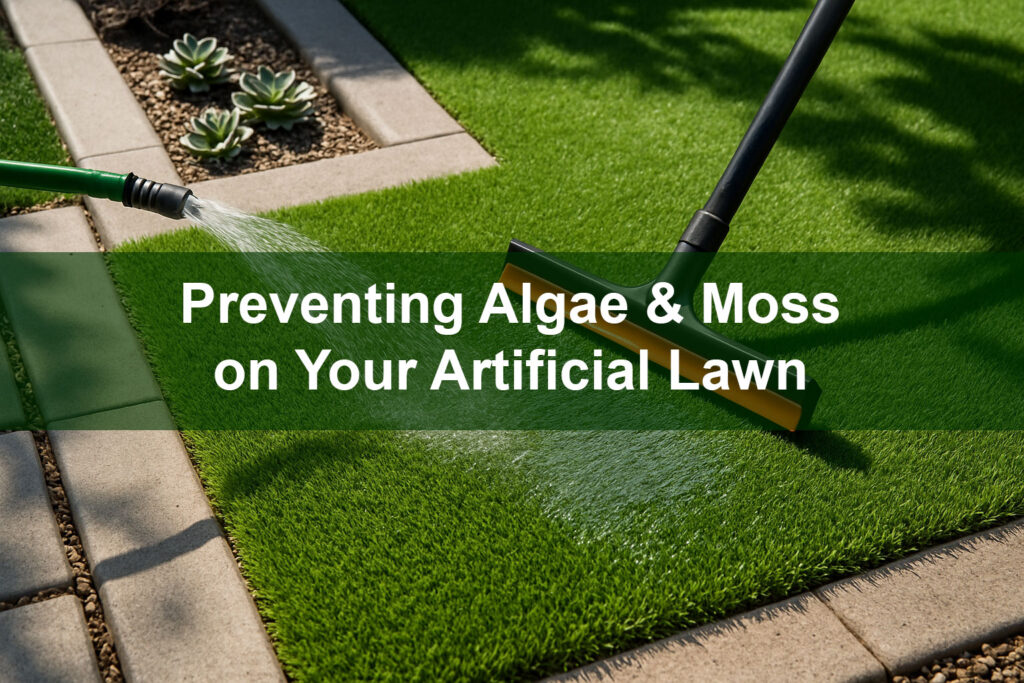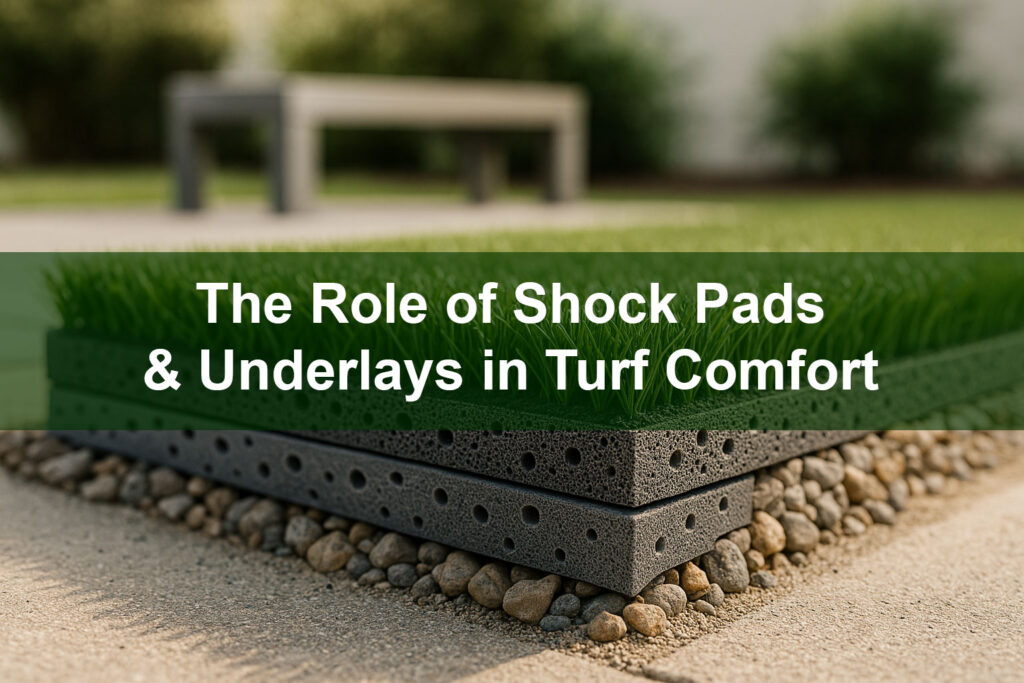Enhancing Accessibility: Wheelchair-Friendly Paths with Turf
Creating accessible outdoor spaces is essential for people of all mobility levels. Artificial grass paths—properly installed and maintained—offer slip-resistant, smooth surfaces that blend seamlessly with landscaping. This guide covers design strategies, base preparation, turf selection, and maintenance tips to build wheelchair-friendly walkways that look great and perform reliably.
What You’ll Learn in This Guide:
- Design principles for ADA-compliant paths
- Selecting turf with optimal pile height and backing
- Base preparation for stability and drainage
- Edge restraints and transition details
- Installation best practices and layout tips
- Maintaining smooth, safe surfaces over time
- Integrating ramps, thresholds, and seating areas
- Case examples: residential and public spaces
1. ADA-Compliant Path Design Principles
Wide, level, and gently sloping: key guidelines include:
- Width: Minimum 36 inches clear width for single wheelchair passage; 60 inches for two-way traffic.
- Slope: Maximum 1:20 (5%) running slope; cross slope ≤1:48 (<2%).
- Rest areas: Level landings every 200 feet or at slope transitions.
- Edge protection: Curbs or tapered borders to prevent wheel drift.
2. Choosing the Right Turf
Select turf engineered for firm, stable surfaces:
- Low pile height (≤0.75 in): Reduces roll resistance and improves pushability.
- Closed-cell backing: Prevents infill migration and creates a firmer underfoot feel.
- UV and wear-resistant fibers: Withstand traffic and exposure.
- Non-slip surface: Textured blades for traction when wet.
3. Base Preparation for Stability & Drainage
A solid sub-base and proper drainage prevent settling and pooling:
- Excavation depth: 3–4 inches below grade for aggregate base; adjust for frost lines in cold climates.
- Geotextile fabric: Separates soil and prevents base contamination.
- Aggregate base: 2–3 inches of crushed stone (¼–¾ in), compacted in lifts with a plate compactor.
- Fine bedding layer: 1 inch of stone dust leveled to provide a smooth substrate.
- Slight crown: ¼ inch per foot to shed water to landscape beds or drain channels.
4. Edge Restraints & Transition Details
Secure edges and ensure smooth transitions:
- Aluminum or composite edging: Installed flush with turf and adjacent surfaces.
- Transition plates: Metal or composite ramps where turf meets concrete or decking.
- Color contrast: Use tactile or visual cues for path boundaries.
5. Turf Installation & Layout Tips
Precision in cutting and seaming ensures performance:
- Align blades: Turf grain should run lengthwise with the path.
- Seam tape & adhesive: Use premium products rated for load-bearing applications.
- Stapling or adhesive perimeter: Every 4–6 inches along edges, ensuring flush fastening.
- Infill: Minimal silica sand infill (0.5–1 lb/ft²) to stabilize fibers without creating softness.
6. Maintenance for Smooth Accessibility
Simple upkeep keeps paths safe and even:
- Regular brushing: Monthly power broom for fiber lift and infill distribution.
- Debris clearing: Weekly blow-off or sweeping to remove leaves and dirt.
- Edge inspection: Check for lifting or gaps and re-secure as needed.
- Periodic rinsing: Rinse once per season to clear dust and pollen.
7. Integrating Ramps, Seating & Rest Zones
Enhance user experience with thoughtful amenities:
- Gentle ramps: 1:12 slope max for changes ≥6 inches in elevation.
- Bench zones: 48-inch-long benches positioned every 200 feet.
- Shade structures: Pergolas or trees to provide respite.
- Signage: Clear directional and safety signage at decision points.
8. Case Studies: Accessible Turf Paths
Residential Garden Path
A multi-generational family installed a 50‑foot accessible turf path connecting garage to patio. Low pile turf and foam underlay allowed easy wheelchair navigation. Path remains solid under wheelchairs, walkers, and foot traffic.
Public Park Walkway
A city park replaced uneven gravel with turf paths looping around playgrounds. ADA compliance was met with 42-inch widths, tactile edging, and color-contrasting borders. Visitor satisfaction rose by 30%.
Start Building Accessible Paths Today
Contact Buy-Grass for custom wheelchair-friendly turf path designs and installations.







